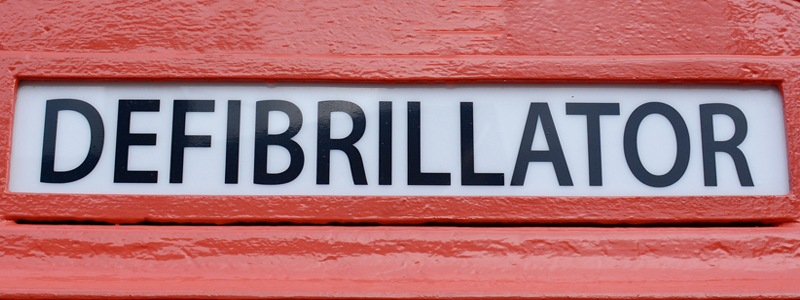What is a defibrillator and how do I use one?
Defibrillators save lives by giving a high energy electric shock to the heart through the chest wall when someone is in cardiac arrest. They are called defibrillators because atrial fibrillation is the medical term for an irregular or abnormally fast heartbeat: the cause of cardiac arrest. The purpose of the electric shock is to restore the normal rhythm – to defibrillate the heart.
A defibrillator is also known as an AED (Automatic External Defibrillator). Being aware of these initials can save lives because they often appear on the signage for a Public Access Defibrillator (PAD) – those found in public places such as rail stations, airports and shopping centres.
The need for speed, and for more PADs
Responding quickly with CPR and defibrillation is the key to saving lives and minimising harm when someone suffers a cardiac arrest. The statistical evidence could not be any clearer:
• Around 30,000 out-of-hospital cardiac arrests occur every year in the UK
• 90-95% of cardiac arrest victims will die without immediate treatment
• Every minute without CPR or defibrillation reduces the victim’s survival chances by between 7% and 10%
• When using a defibrillator within 3 to 5 minutes, the survival rate jumps from 6% to 74%
• In urban areas, the average ambulance response time after a cardiac arrest is 11 minutes
The evidence easily shows that having a defibrillator quickly available would save more lives when a cardiac arrest happens.
Don’t delay, anyone can use a defibrillator
If someone collapses and stops breathing, or if they are breathing erratically, it’s vital to call 999 and start CPR to keep blood flowing around the body. The operator will tell you if there’s a PAD nearby. Don’t stop CPR to locate the defibrillator – send someone else to get it if possible.
Worried that you won’t know how to use the PAD? Relax, the device will tell you what to do. Once the defibrillator is open and in position, it will give out clear, easy to follow spoken instructions. Many defibrillators have diagrams or a screen to help you.
There’s also no need to worry about giving someone a jolt when they don’t need it. The defibrillator detects the heart’s rhythm, and won’t deliver a shock unless one is definitely needed.

